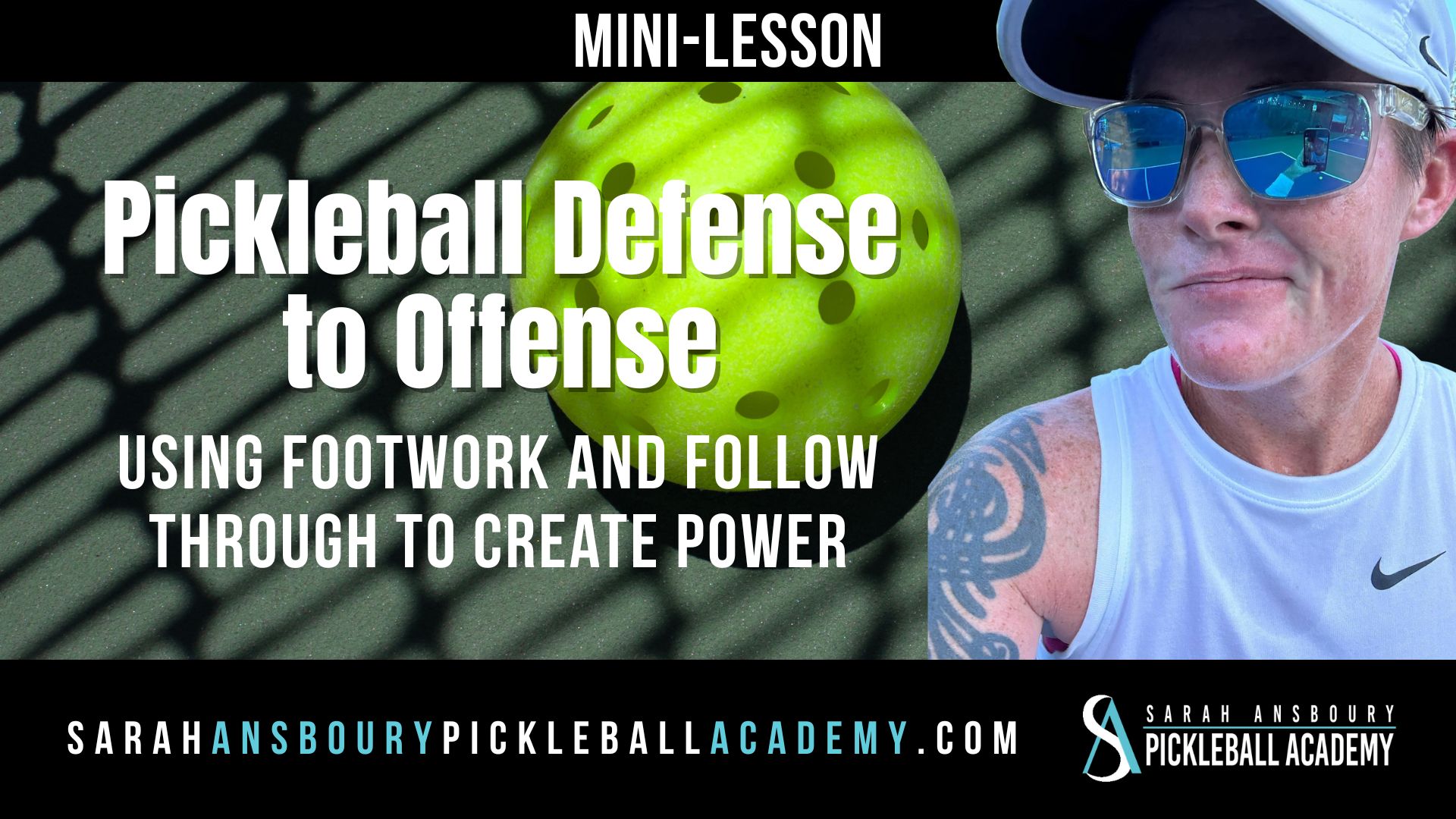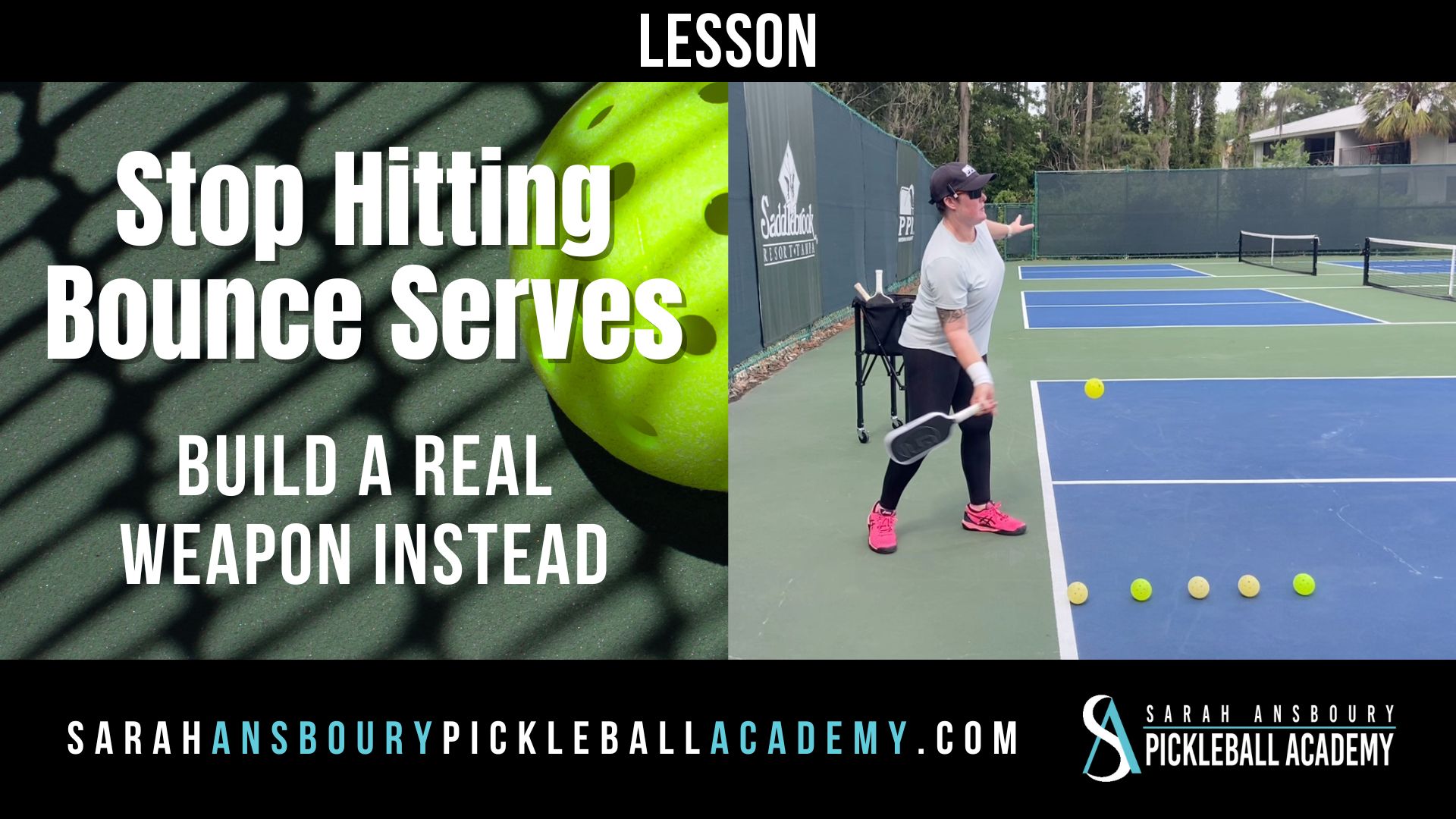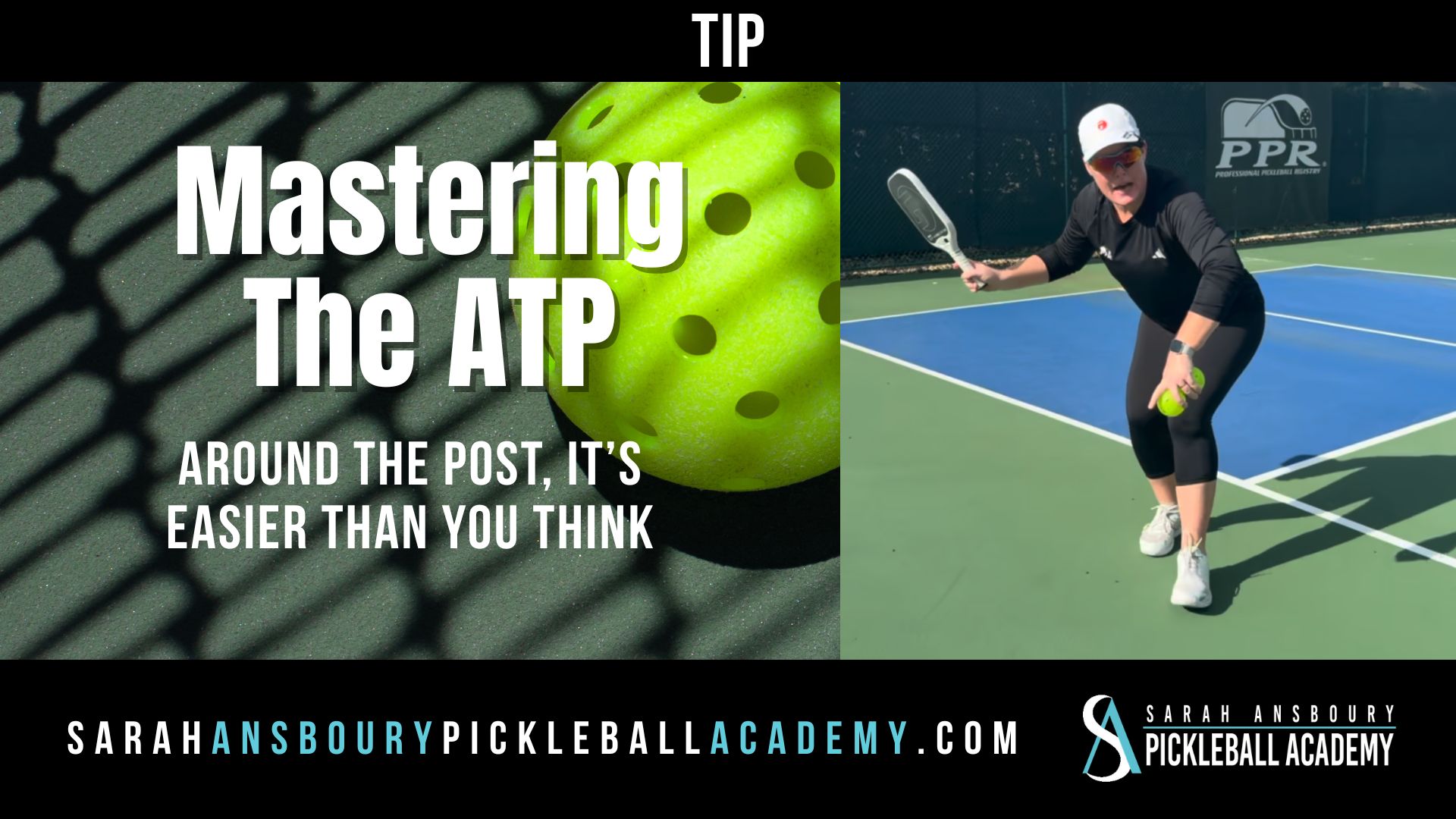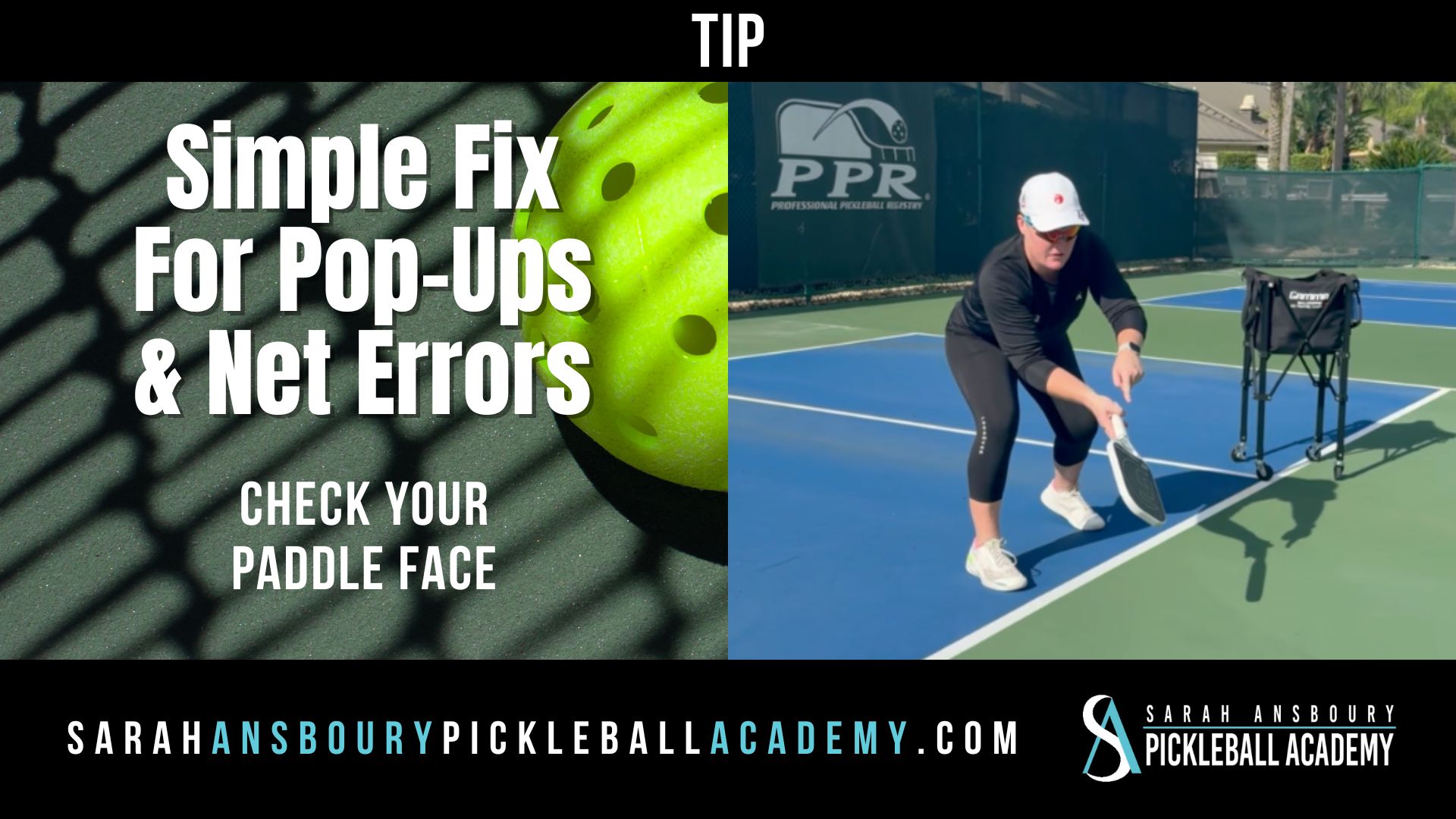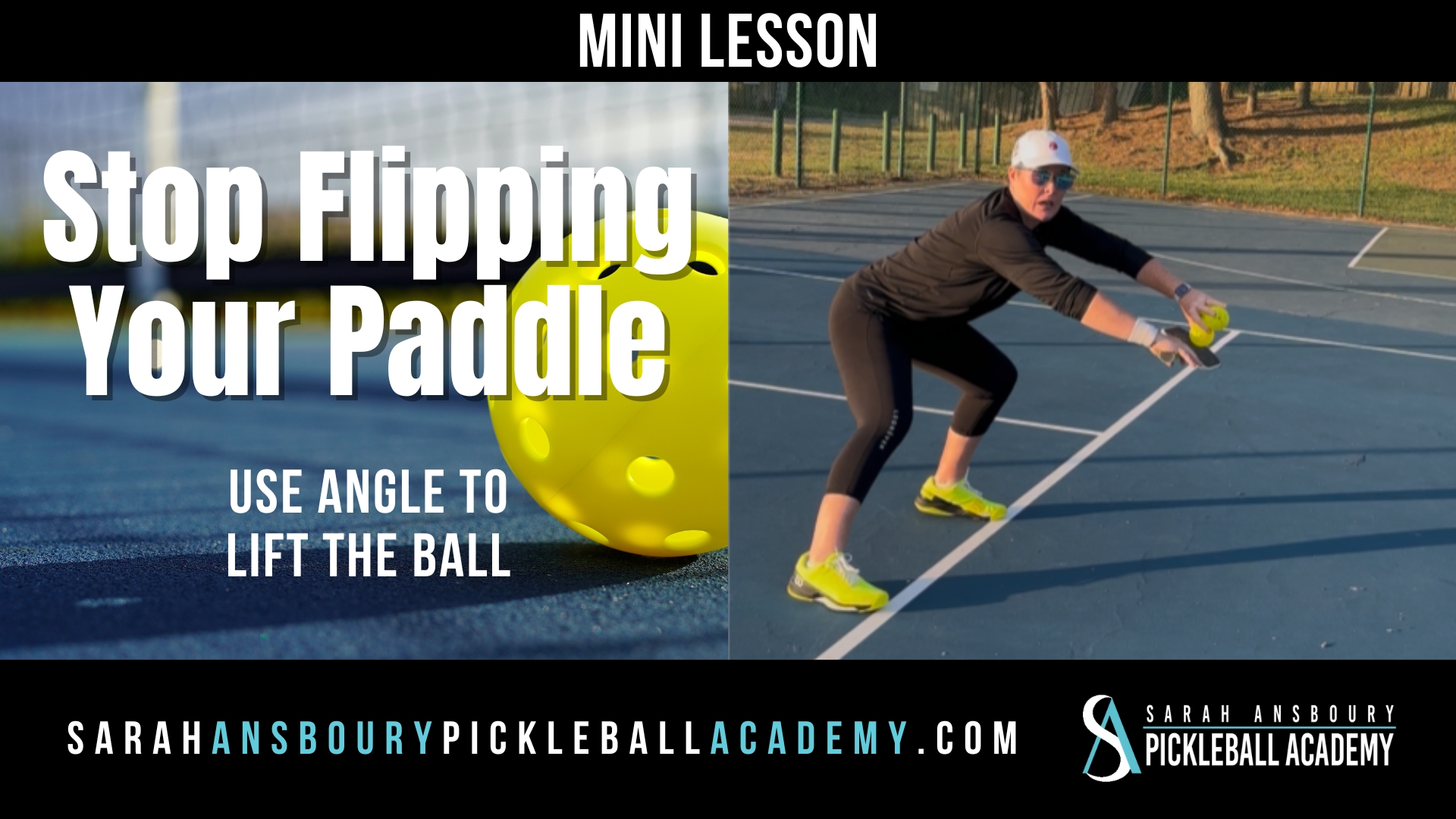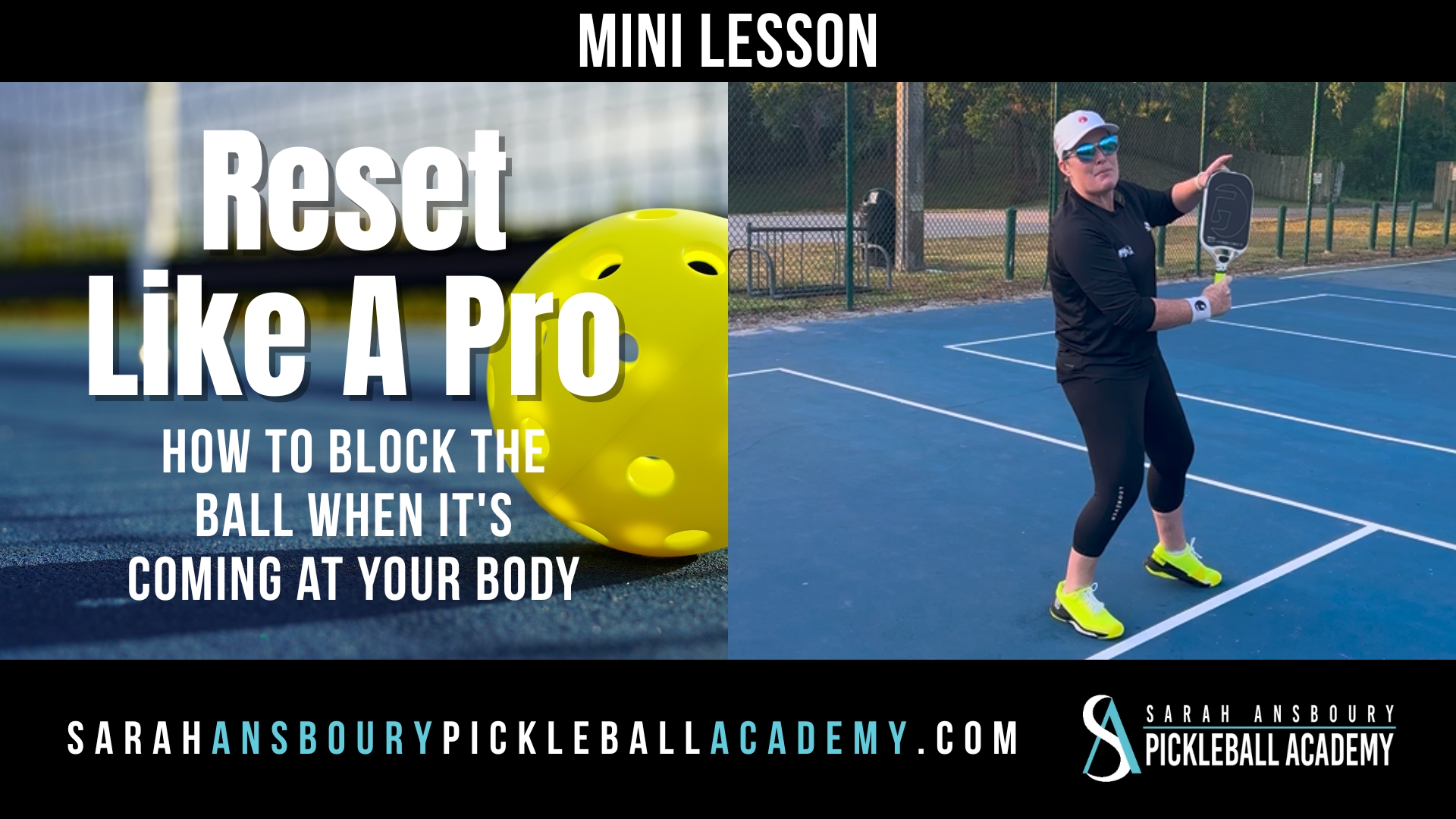Hitting an overhead or running down a lob is crazy hard. The mechanics of doing it may seem unnatural if you didn’t come from tennis or badminton. But even if you did play one of these sports, it is still a challenge.
Stay Calm
Some people get so stressed out about getting lobbed that they lose the point before they attempt to return the shot. But running down a lob is part of the game. It is a skill you can develop, just like learning to hit a forehand or backhand. So rather than complaining about it, prepare for it by making it part of your practice routine.
Stay Safe
Whether you are practicing or playing, Rule #1 is to stay safe. Begin by being more upright when you are standing at the non-volley zone. When you are in your neutral position, be certain to keep your head and chest up. I don’t want to see you dipping your head into the non-volley zone!
Balance is the first word in my pickleball mantra. And it is absolutely essential that you begin in balance and maintain your balance as you run down a lob. Keeping your head up will promote better balance.
Fundamentals of Retrieving a Lob
In my YouTube video on footwork, I review retrieving a lob (starting at the 7:30). Here are the key points:
- Step back with your dominant foot. If you are right-handed, like I am, then take one step back with your right foot.
- Pick up your feet. Pick up your foot on your first step, and each and every step. You want to move quickly but in balance back to the ball. Step rather than shuffle.
- Ideally, you want to retrieve the ball with your forehand. So imagine taking a semi-circle around the ball (in my case the right side of the ball), so that the ball is in front of you.
- Your best shot is typically a third shot drop. Why? Because that will give you time to get back to the line.
Keep Breathing
Our tendency when we are tense is to hold our breath. This causes stress, and stress makes us slower and less able to execute our shots. So keep breathing. If you can, think to take a breath before you hit the ball. Remember, breathe is the second world in my mantra.
Believe…You have Practiced!
We have to believe in ourselves and our abilities to play at our best. We believe because we have put in the time practicing. We  know the mechanics of the movement, and the movement is now second nature to us. We believe because we have trained. We have proven to ourselves that we can do it!
know the mechanics of the movement, and the movement is now second nature to us. We believe because we have trained. We have proven to ourselves that we can do it!
So practice running down lobs. You can do this with a practice partner or alone. With a partner, practice by playing a game. Begin with both practice partners at the non-volley zone on either side of the net. Begin the game by dinking. After a minimum of three dinks, one player may lob. If the retriever is unable to retrieve the ball…the “lobber” earns a point. If the retriever is able to return the ball, or the ball is not in the court, he or she earns a point. Continue rally scoring until one player gets 11 points. As you advance, you can make this game more difficult. By awarding 1 point, for retrieving and 2 points for hitting an effective third shot drop that lands inside the non-volley zone.


